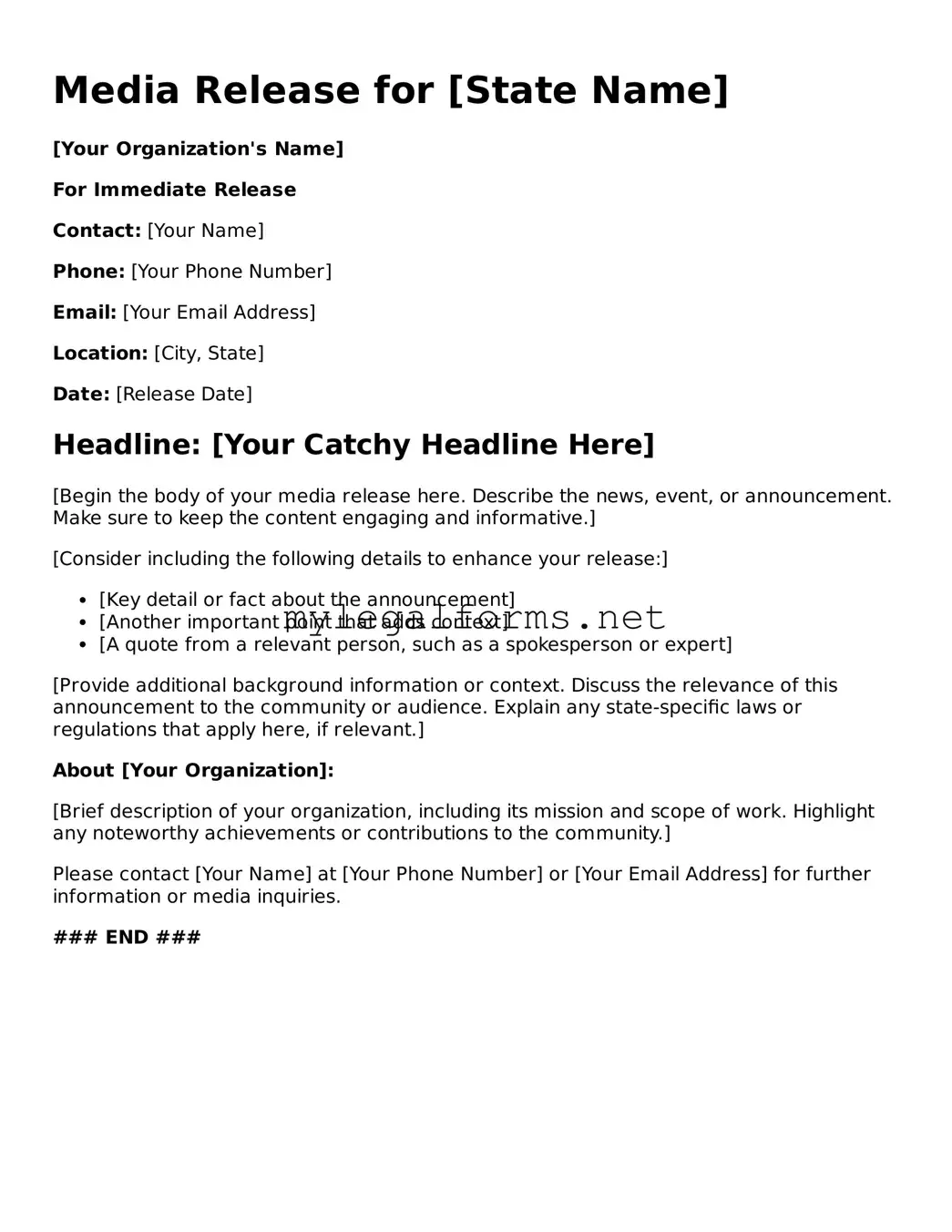Attorney-Approved Media Release Form
A Media Release form is a legal document that grants permission for the use of an individual's likeness, voice, or other personal attributes in various media formats. This form is essential for protecting both the creator and the individual being featured, ensuring that all parties understand the terms of use. Whether for a promotional video, a news article, or social media content, having a properly executed Media Release can prevent potential disputes and misunderstandings.
Launch Media Release Editor
